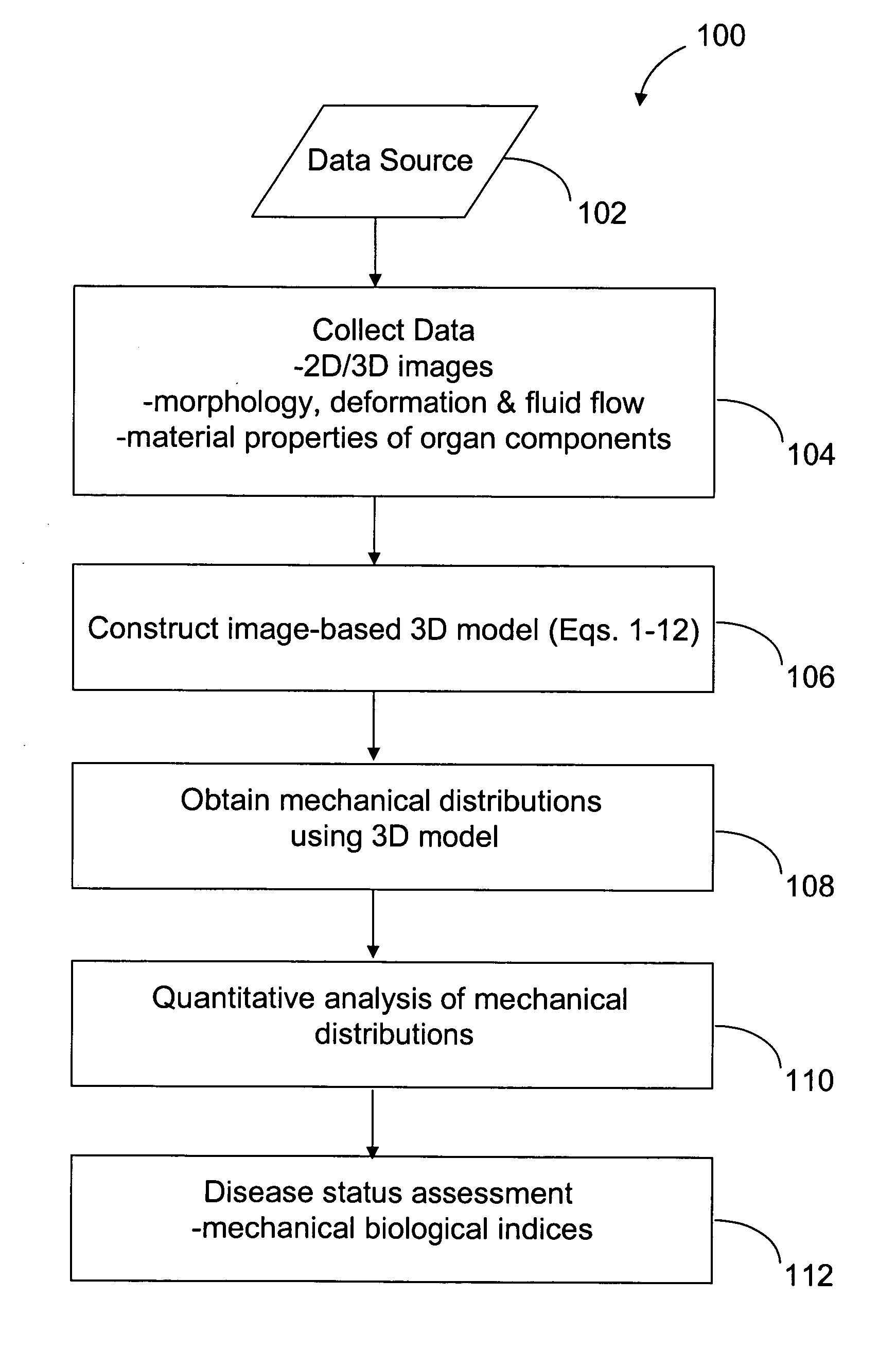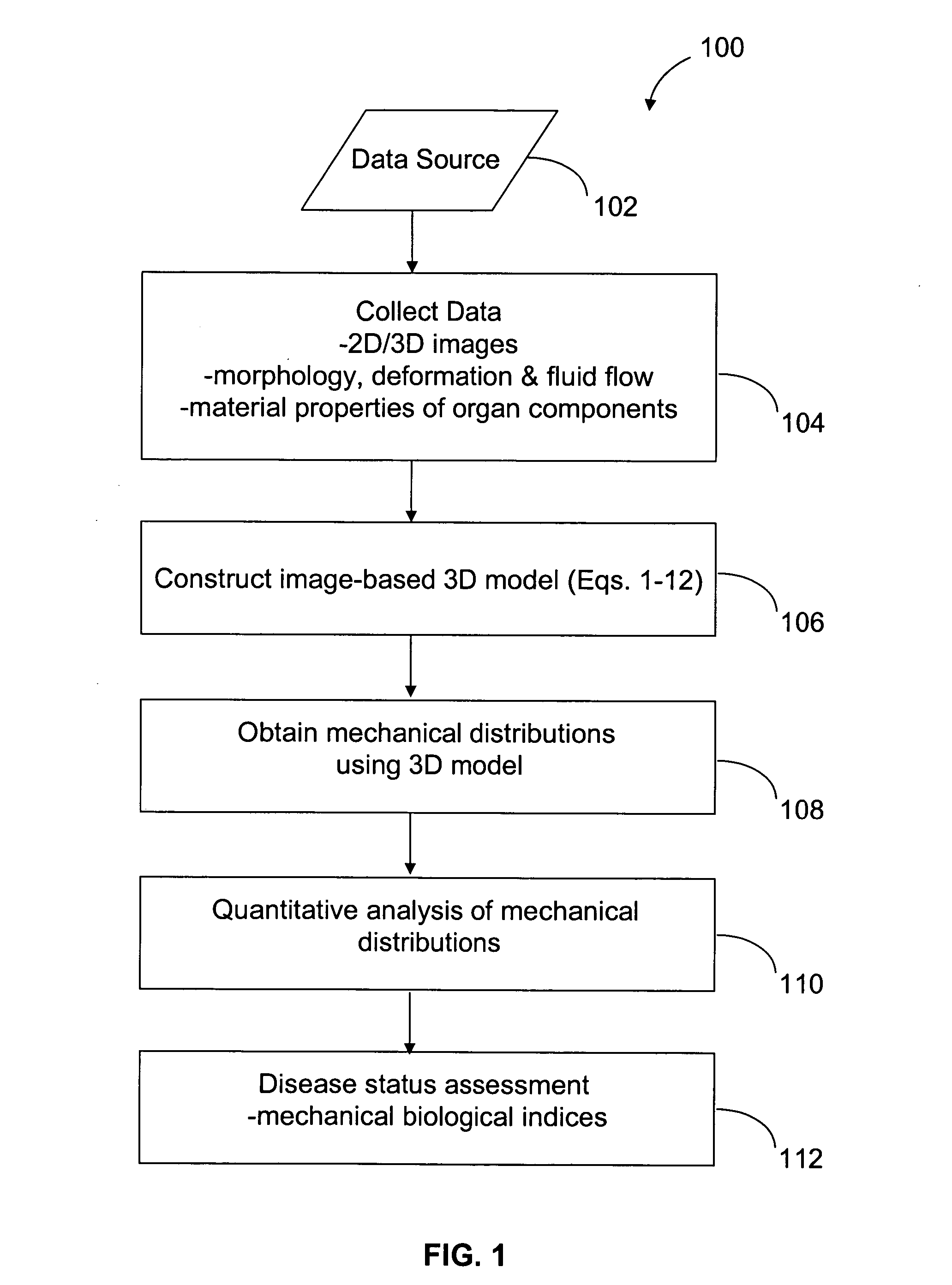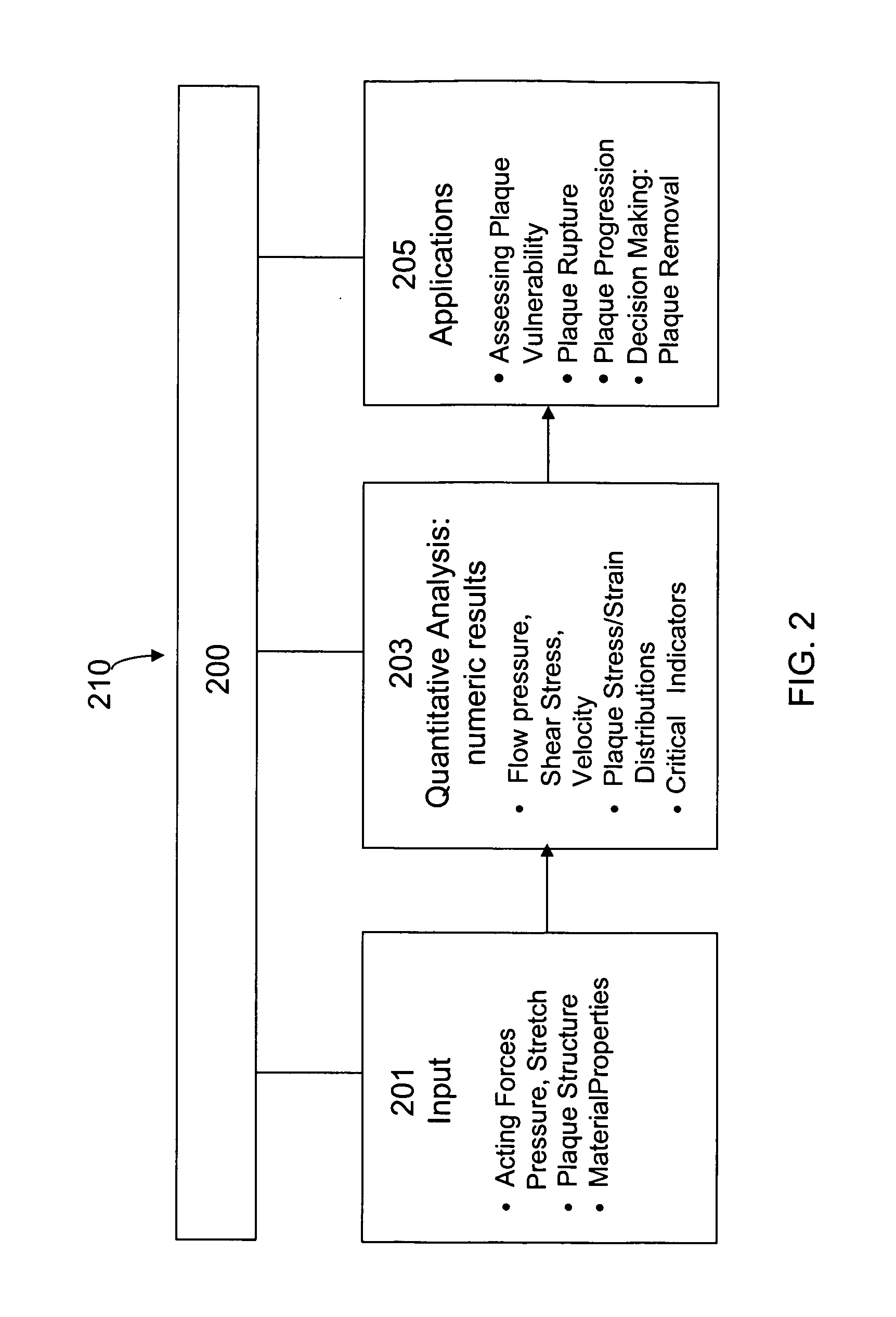Image-based computational mechanical analysis and indexing for cardiovascular diseases
- Summary
- Abstract
- Description
- Claims
- Application Information
AI Technical Summary
Benefits of technology
Problems solved by technology
Method used
Image
Examples
example 1
Unsteady Stress Variations in Human Atherosclerotic Plaques and Sensitivity Analysis Using 3D MRI-Based Fluid-Structure Interactions (FSI) Models
[0072] This example illustrates methods and computer systems 100, 210 of the invention for providing assessment for plaque vulnerability to rupture.
[0073] An unsteady three-dimensional (3D) MRI-based computational model for human atherosclerotic plaques with multi-component plaque structure and fluid-structure interactions (FSI) was introduced to perform mechanical analysis and identify critical flow and stress / strain conditions which might be related to plaque rupture.
[0074] Also, in this example, “local” maximal stress / strain values and their variations were investigated. A “critical site tracking” (CST) approach was used to concentrate on plaque stress / strain behaviors at well-selected critical locations which include locations of local maxima, locations of very thin cap and any sites of special interest. Stress / strain distributions a...
example 2
Local Maximal Stress Hypothesis and Computational Plaque Vulnerability Index (CPVI) for Atherosclerotic Plaque Assessment
[0093] In Example 1, a 3D MRI-based computational model with multi-component plaque structure and fluid-structure interactions (FSI) was introduced to perform mechanical analysis for human atherosclerotic plaques and identify critical flow and stress / strain conditions which may be related to plaque rupture. In this Example 2, a “local maximal stress hypothesis” and a stress-based computational plaque vulnerability index (CPVI) were used to assess plaque vulnerability. Local maximal stress results tracked at critical sites in the plaque were be used to determine CPVI values. A semi-quantitative histopathological method was used to classify plaques into different grades, according to factors which were generally known to correlate with plaque vulnerability. This histopathological classification was used as the “gold standard” to validate the computational indices o...
example 3
3D Image-Based Computational Modeling for Patient-Specific Mechanical Analysis of Human Hear Right Ventricles
[0119] In this example, the MRI techniques and computational modeling were combined to build a patient-specific 3D computational model with fluid-structure interactions (FSI) for the human right ventricle (RV). Right ventricular dysfunction is one of the more common causes of heart failure in patients with congenital heart defects.
[0120] Due to the complexity of the motion of a human right ventricle and related blood flow and structure stress / strain behaviors, some simplifications were made in the modeling so that proper measurements could be obtained and the model could be solved to obtain flow and stress / strain information. Based on the solutions, mechanical analysis could be performed to analyze cardiac functions of the right ventricle. The patient-specific 3D computational modeling techniques of the invention can be further employed in computer-aided cardiac surgery pla...
PUM
 Login to View More
Login to View More Abstract
Description
Claims
Application Information
 Login to View More
Login to View More - R&D
- Intellectual Property
- Life Sciences
- Materials
- Tech Scout
- Unparalleled Data Quality
- Higher Quality Content
- 60% Fewer Hallucinations
Browse by: Latest US Patents, China's latest patents, Technical Efficacy Thesaurus, Application Domain, Technology Topic, Popular Technical Reports.
© 2025 PatSnap. All rights reserved.Legal|Privacy policy|Modern Slavery Act Transparency Statement|Sitemap|About US| Contact US: help@patsnap.com



